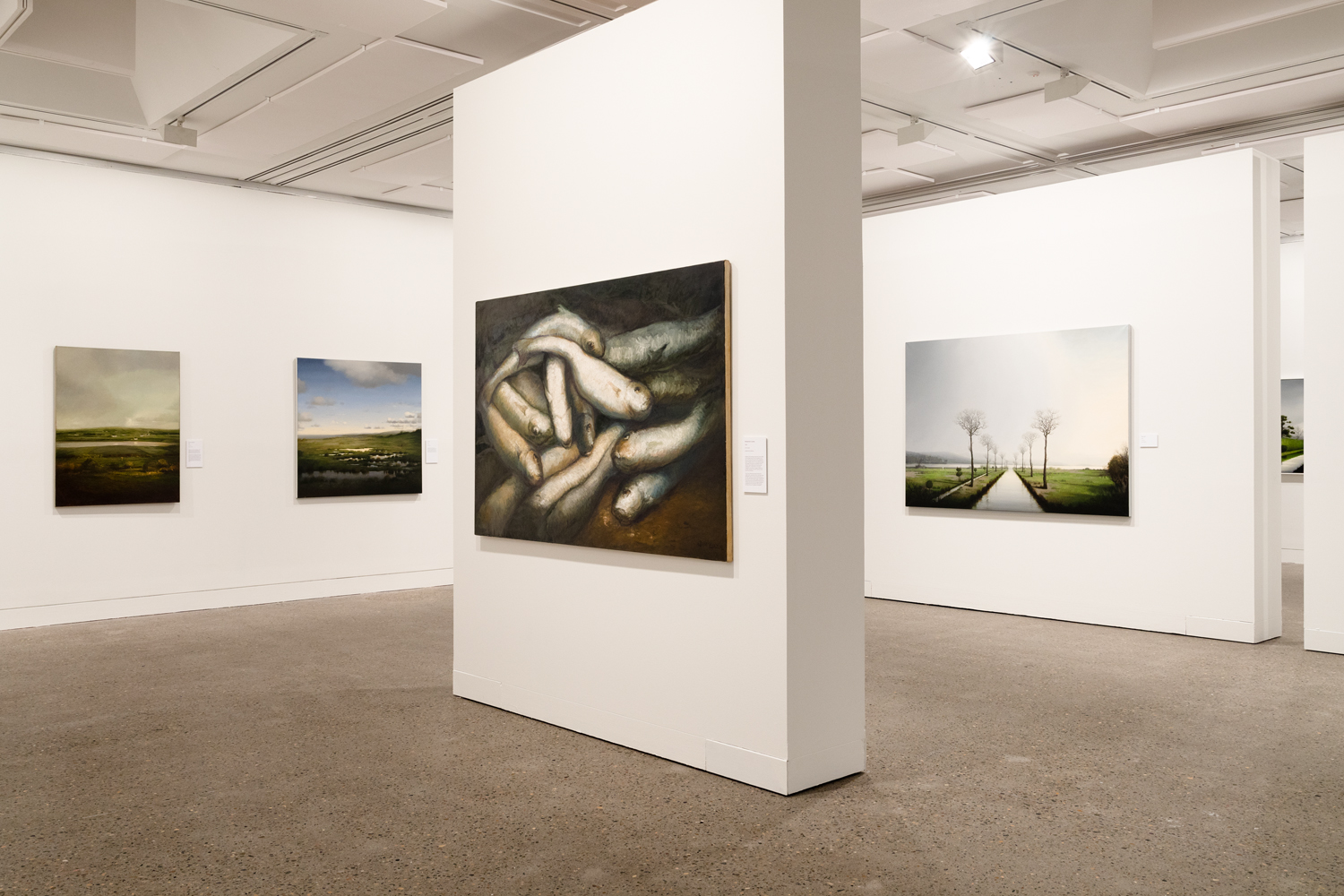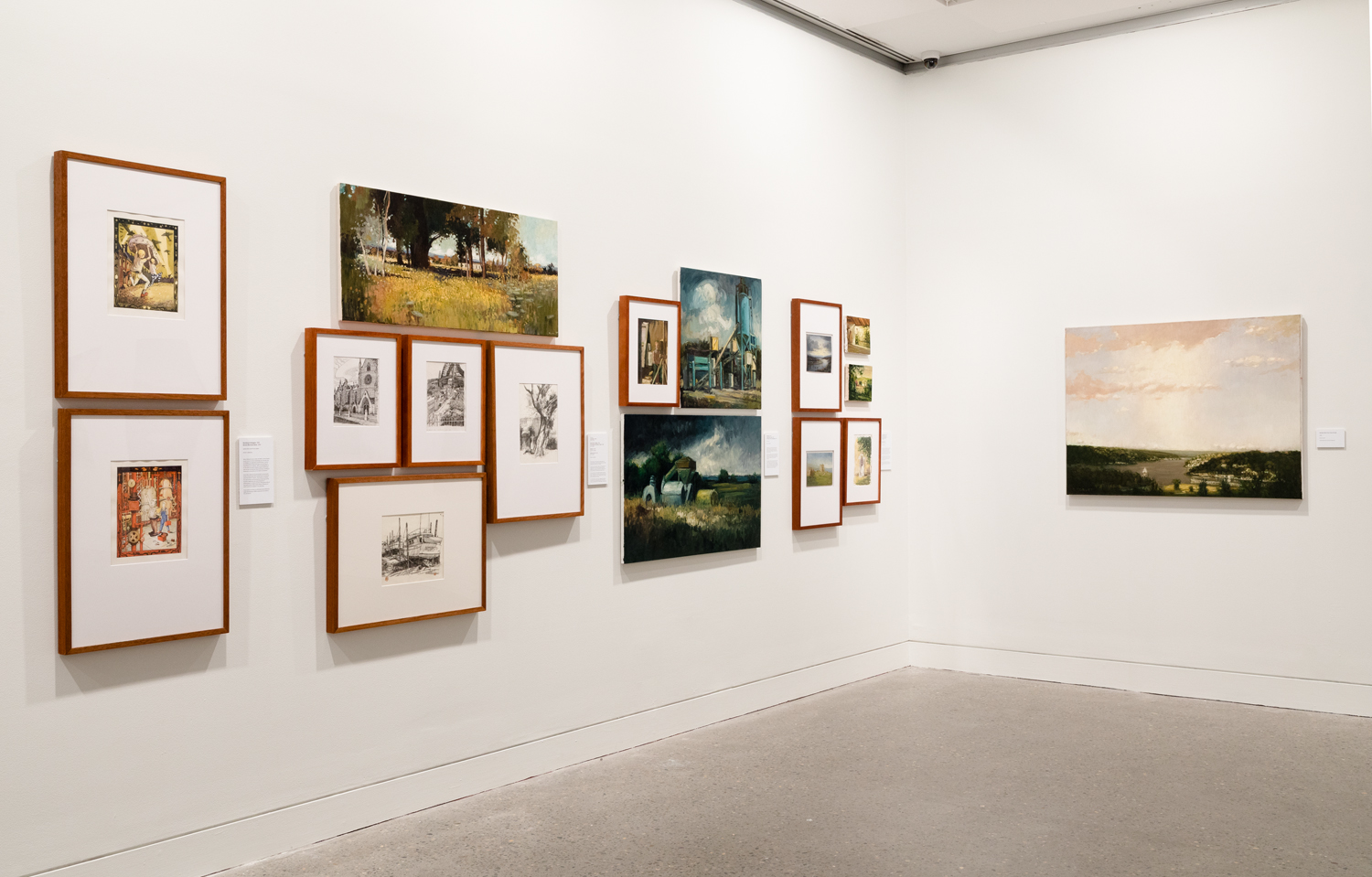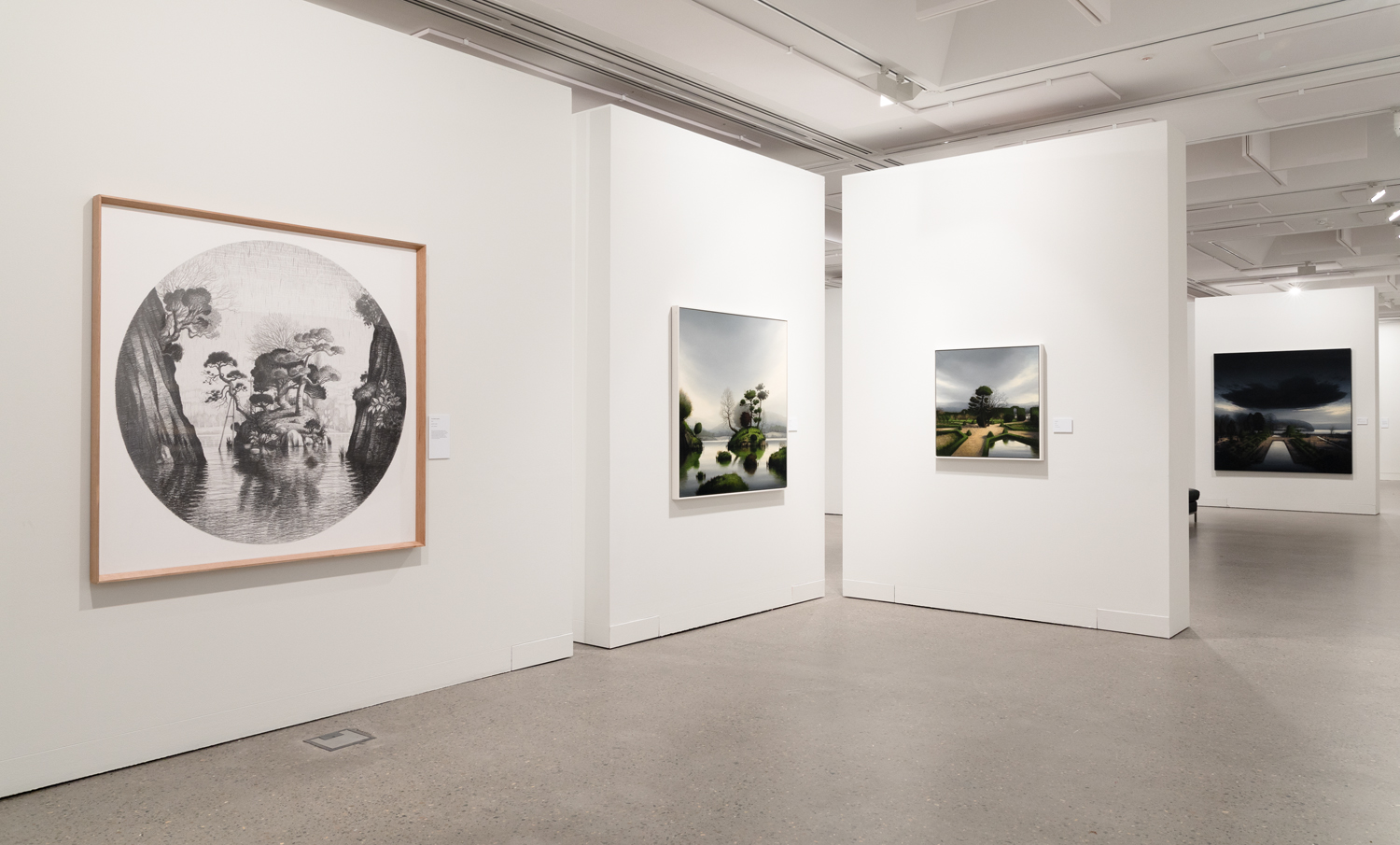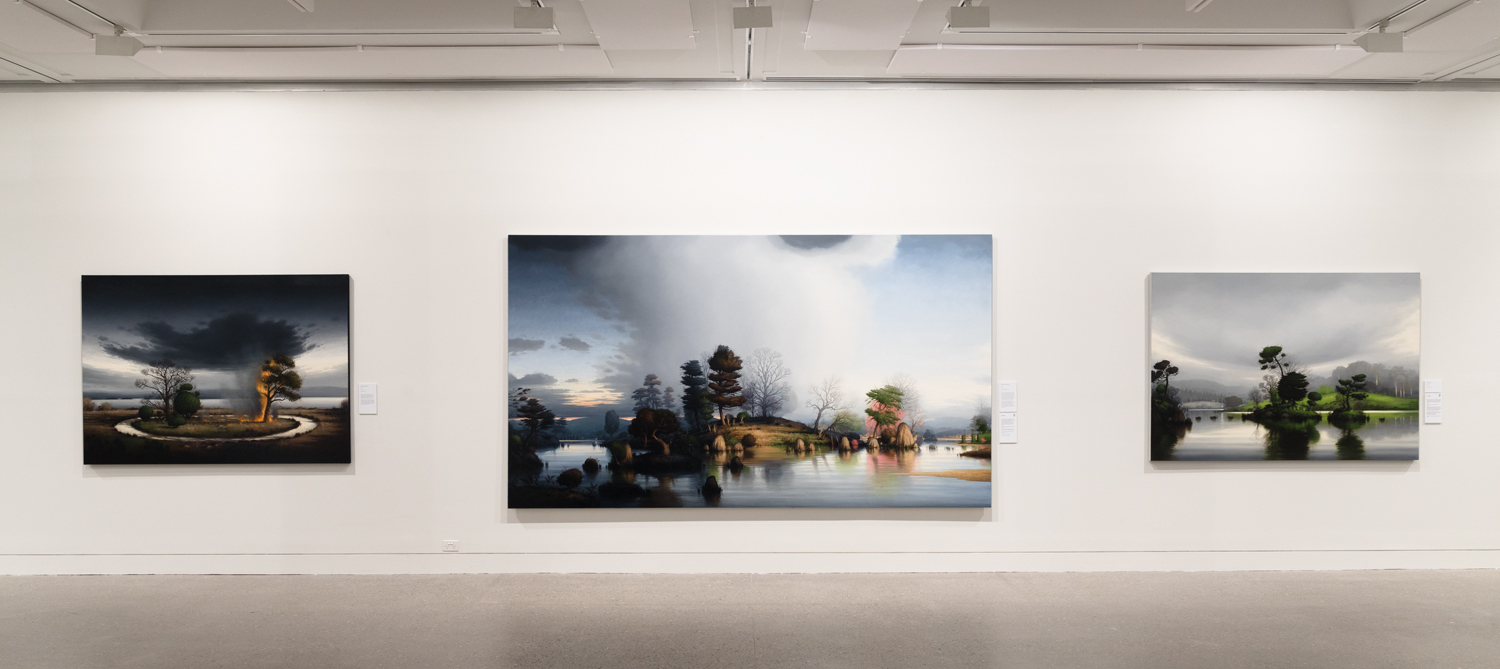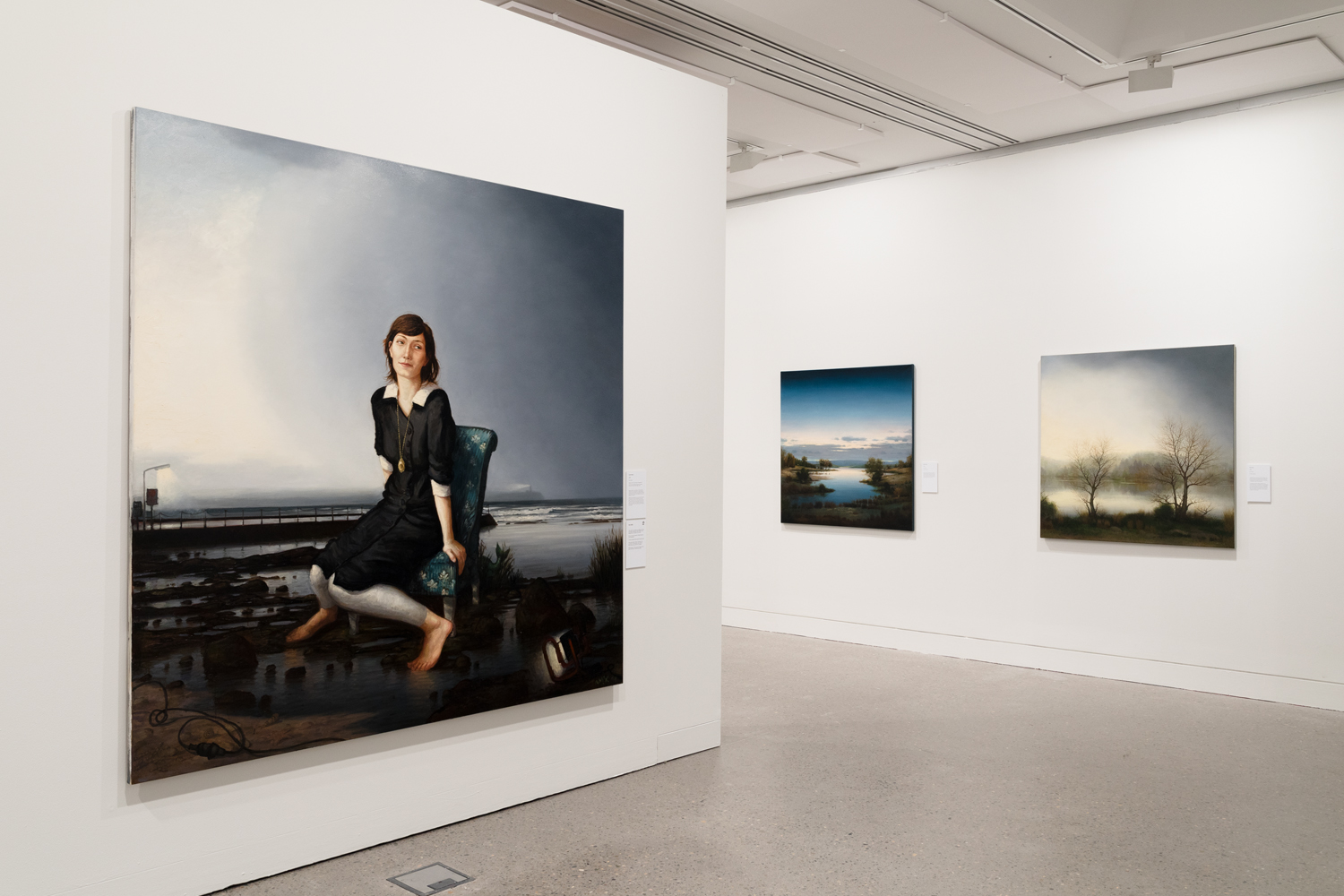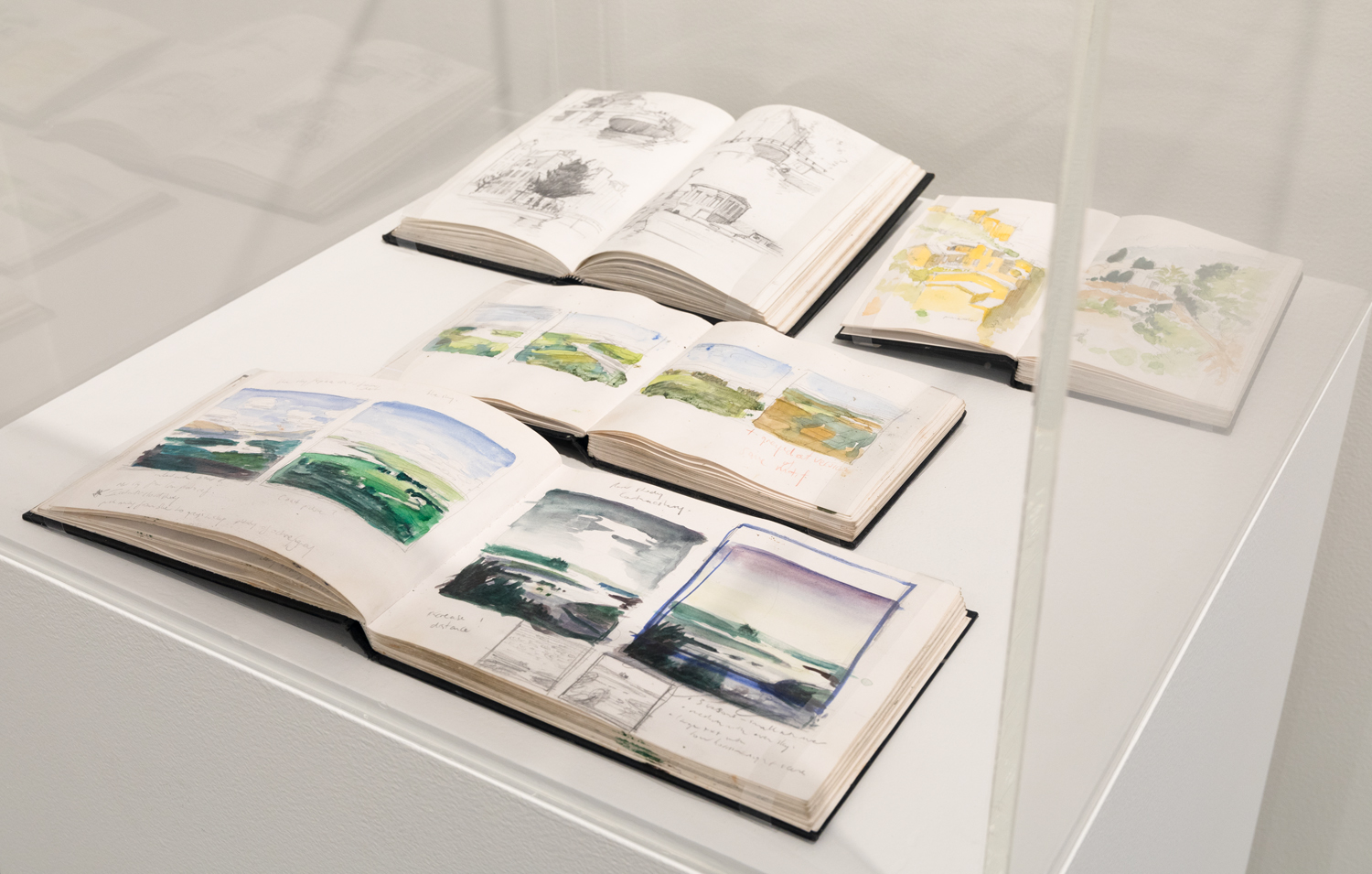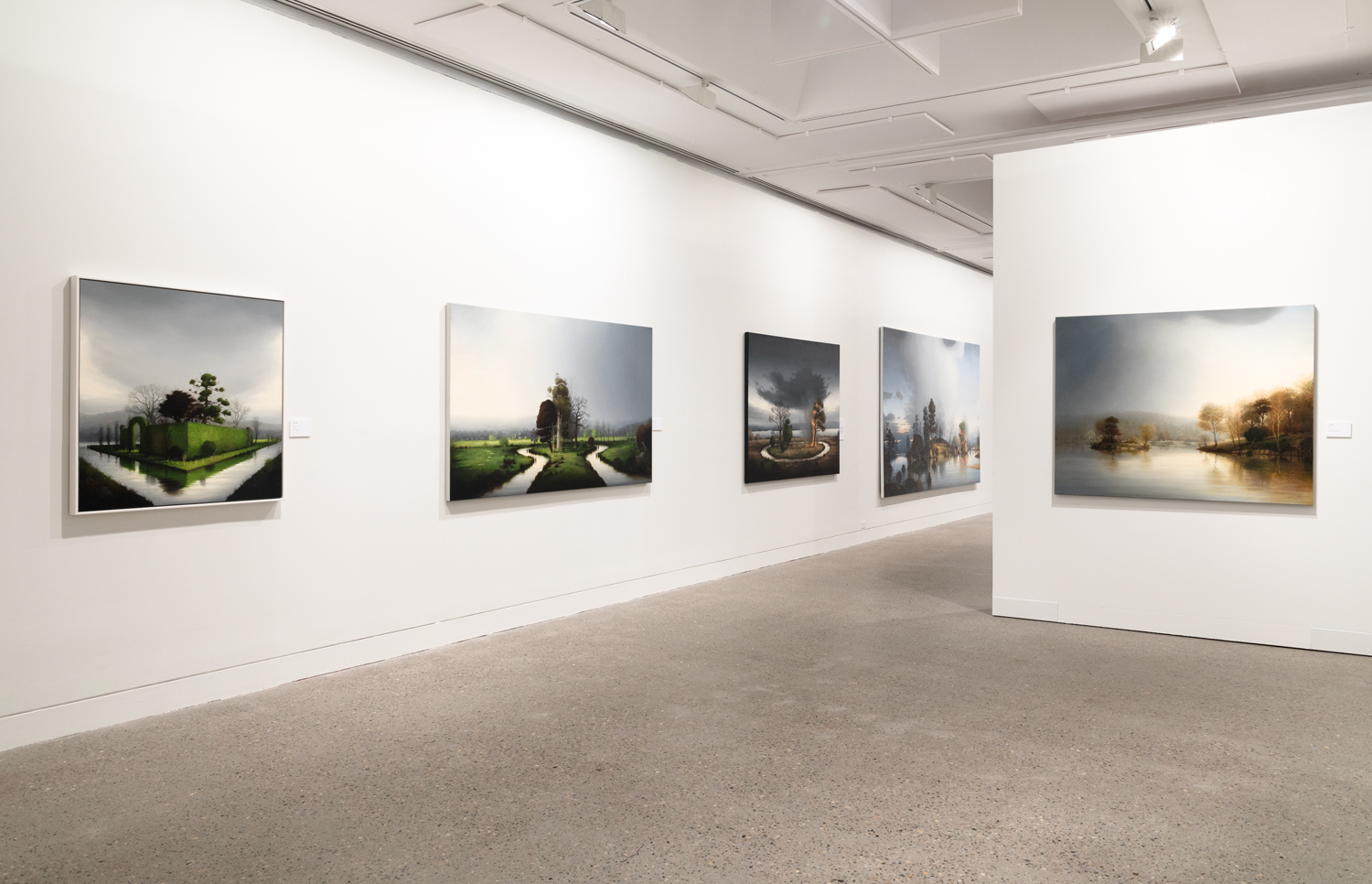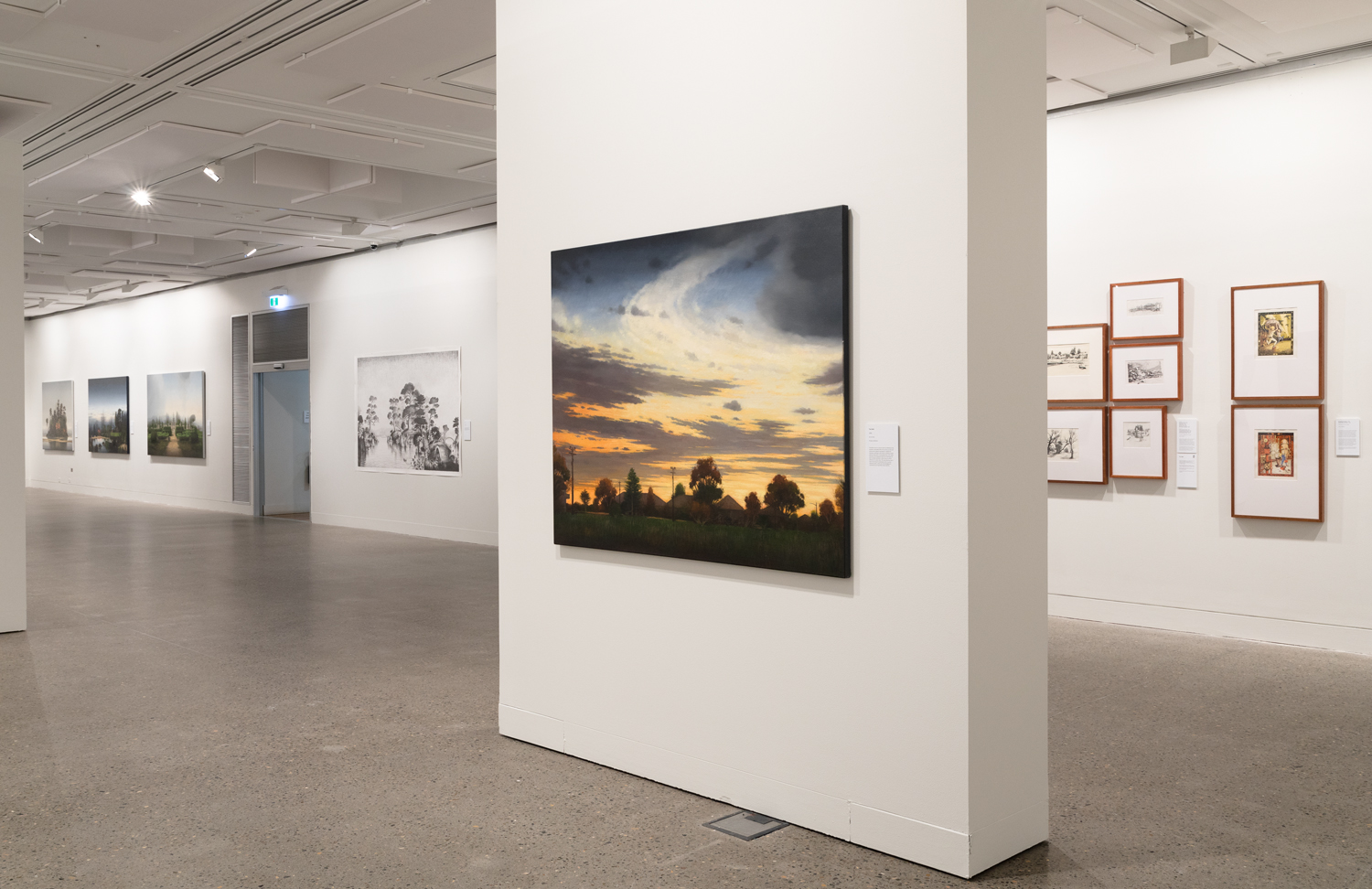25 August 2018 to 28 October 2018
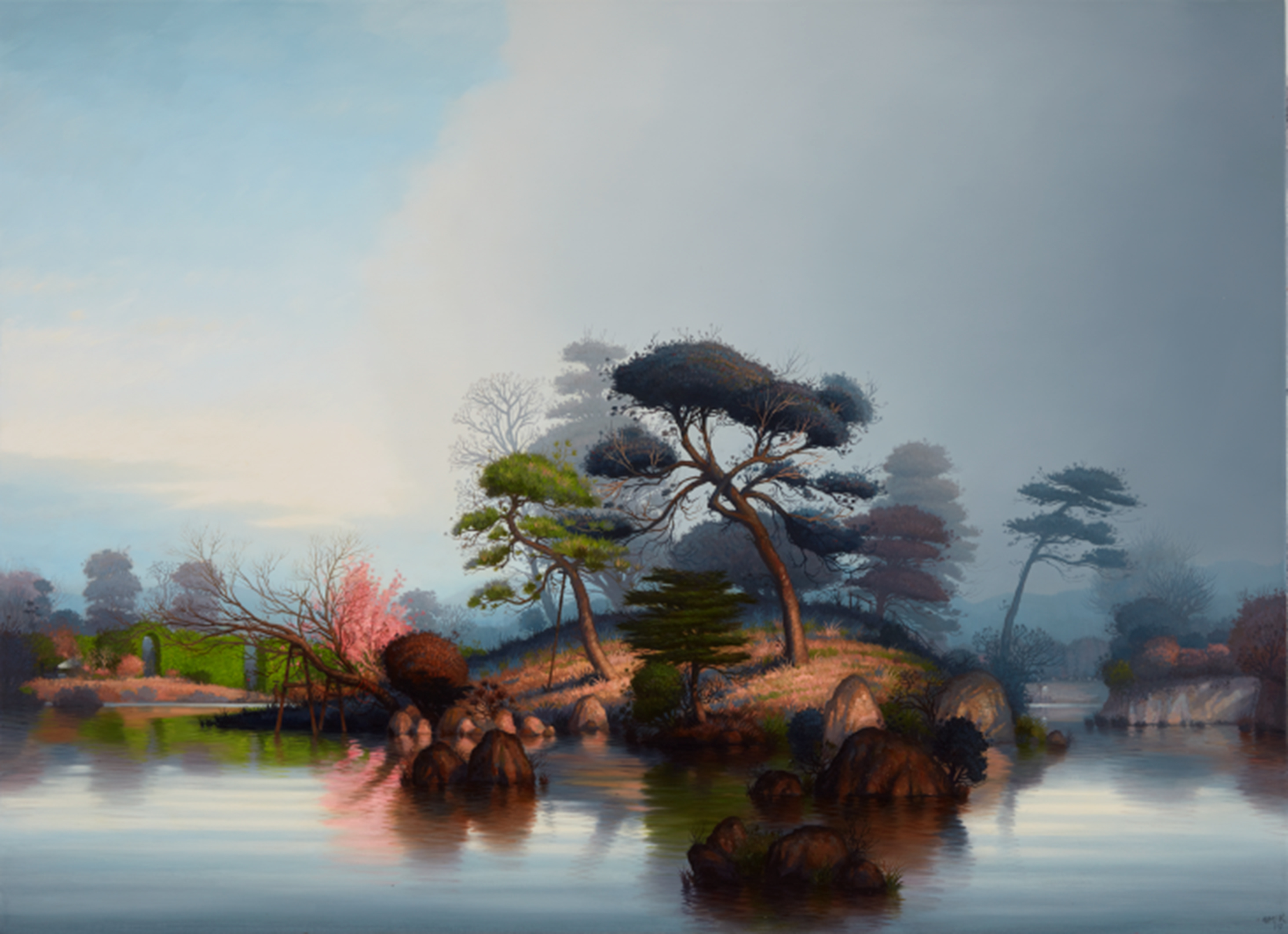
Image: Alexander McKenzie, Hidden life of trees 2017, oil on linen. Courtesy the artist and Martin Browne Contemporary.
Hazelhurst’s first solo exhibition for artist Alexander McKenzie, known for his evocative, luminous landscape paintings. The exhibition showcased 42 of Alexander McKenzie's most significant works, many of which had not been seen before together as they were largely from private collections.
For McKenzie the landscape is both a place for contemplation and a metaphor for personal journeys. Created entirely in his mind’s eye and conjured from imagination and memory, his uninhabited landscapes are places that do not exist but are a means of exploring personal and historical narratives through symbols and metaphors.
While his works have an underlying sense of familiarity, they are more evocative of otherness than a representation of a specific place, and they instantly transport the viewer into a dreamlike otherworld. The visual symbols, located in a maze-like formation in each work, provide a pathway for the viewer to navigate the underlying narrative.
"The suggested journey and choices of direction in each of these paintings reflect the decisions, both temporal and spiritual, that all of us must make in our lives," said McKenzie.
McKenzie, six times a finalist in the Archibald Art Prize and a nine-time finalist in the Wynne Prize, knew he wanted to be an artist from a young age. Born into a creative Scottish family, Alexander’s artistic pursuits were encouraged from an early age.
"My father developed drawings to illustrate his stories to me of growing up in Scotland and the war years and of his working life in Glasgow. My mother was a free-spirit and educator who also encouraged all creative pursuits. By age 11, my paintings had become so prolific and consistent that they had taken over the house in which I grew up in Sydney’s western suburbs, so much so my parents gave me a spare room to use as a dedicated studio," said McKenzie.
McKenzie’s interest in European art from a young age led to his intense study of centuries-old painting techniques and a move towards increasingly complex symbolism in his work. As such, numerous comparisons have been drawn between his paintings and those of the masters of the Dutch Golden Age, a period that McKenzie has often cited as having the largest influence on his work. McKenzie eschews the glorious light and unique and diverse landscape of Australia, as well as the abstraction favoured by his contemporaries. Instead, his works have a closer affinity with the landscape and environment of Europe and Asia: the islands, lochs, and lush emerald-coloured hills of his ancestral homeland of Scotland; the ornate and formal Renaissance gardens of France and Italy, and the Edo period gardens of Japan that are loaded with symbolism.
The tree has become a recurring symbolic motif in his work – from his from his childhood drawings through to the works he made at art school and his present-day paintings.
"In McKenzie’s work the tree is often a metaphor for the self, and therefore his paintings become a type of self-portrait," said Curator Carrie Kibbler.
"I like the idea of looking after a tree as it grows, changing it, clipping it, curating it, bending it, as an overriding symbol of the way I believe we need to do that to ourselves – tended trees become a reference to one’s own soul," said McKenzie.
In contrast to his uninhabited landscapes are his portraits of creative people he finds fascinating and compelled to paint such as actor Richard Roxburgh and musicians Matt Corby and Sarah Blasko – a childhood friend who he painted against a backdrop of Shelley Beach in 2008.
Alexander McKenzie’s work is held in major collections including The Australian War Memorial, Deakin University, Home of the Arts, Macquarie University, Maitland Regional Gallery, Newcastle Regional Gallery, Orange Regional Gallery, Queensland University of Technology, Tweed Regional Gallery and University of Queensland.

